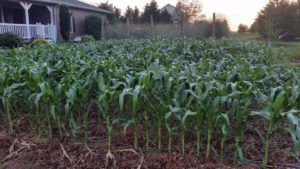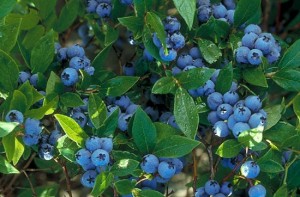Homesteading – Choosing the Right Varieties
go.ncsu.edu/readext?602032
en Español / em Português
El inglés es el idioma de control de esta página. En la medida en que haya algún conflicto entre la traducción al inglés y la traducción, el inglés prevalece.
Al hacer clic en el enlace de traducción se activa un servicio de traducción gratuito para convertir la página al español. Al igual que con cualquier traducción por Internet, la conversión no es sensible al contexto y puede que no traduzca el texto en su significado original. NC State Extension no garantiza la exactitud del texto traducido. Por favor, tenga en cuenta que algunas aplicaciones y/o servicios pueden no funcionar como se espera cuando se traducen.
Português
Inglês é o idioma de controle desta página. Na medida que haja algum conflito entre o texto original em Inglês e a tradução, o Inglês prevalece.
Ao clicar no link de tradução, um serviço gratuito de tradução será ativado para converter a página para o Português. Como em qualquer tradução pela internet, a conversão não é sensivel ao contexto e pode não ocorrer a tradução para o significado orginal. O serviço de Extensão da Carolina do Norte (NC State Extension) não garante a exatidão do texto traduzido. Por favor, observe que algumas funções ou serviços podem não funcionar como esperado após a tradução.
English
English is the controlling language of this page. To the extent there is any conflict between the English text and the translation, English controls.
Clicking on the translation link activates a free translation service to convert the page to Spanish. As with any Internet translation, the conversion is not context-sensitive and may not translate the text to its original meaning. NC State Extension does not guarantee the accuracy of the translated text. Please note that some applications and/or services may not function as expected when translated.
Collapse ▲Choosing the appropriate varieties for your homesteading food production system is a challenging decision that continues to evolve each season. The question, “which variety is best for our area?” is
commonly asked at the Extension Office. I encourage you to add this second question in choosing varieties; “which variety is best for my production system?”.
The first question, “which variety is best for our area?”, is fairly straightforward. Variety selection is much more important when choosing a perennial food producing plant vs. an annual food producing plant. For example, blueberry variety selection is key. If you plant a blueberry variety that is meant for the mountains or Maine it will not do well in the Piedmont heat of the foothills. In contrast, tomato variety selection is not as important. There are tomato varieties that can perform very well in a multitude of latitudes and altitudes. Certainly some tomato varieties are more resistant to certain pests and diseases that are probably more prevalent in certain geographic regions but I cannot think of a variety of tomato that will most certainly perform poorly in our area.
Here’s another example: if you want to plant a peach tree, you need to choose a variety that has a 700 to 800 chilling hour (number of hours in the winter below 45 F) requirement for success in our area. If you buy a peach tree variety at your favorite big box store without checking this you may get a tree that flowers in February (low chilling hour requirement) or a tree that never flowers (high chilling hour requirement). Variety selection is critical for this perennial food producer.
In comparison, the beet variety Detroit is grown as far south as Florida and as far north as Maine. However, if you are suffering from leaf spot on your beet greens, a significant disease for commercial vegetable producers, you may want to consider a variety more resistant to that disease such as Ruby Queen (albeit that a variety trial at Cornell only found a slight difference in disease susceptibility between varieties).
There are a number of excellent resources to help you decide on varieties.
For perennial food producing plants here are a few helpful links on varieties:
Asparagus varieties include: Purple Passion, Jersey Supreme, Jersey Giant, Jersey Knight
Rhubarb varieties include: Victoria, Red Cherry
Strawberry varieties include: Chandler, Camarosa
Raspberry varieties include: Nantahala, Heritage, Caroline
Blackberry varieties include: Arapaho, Apache, Ouachita, Natchez, Kiowa, Osage
Blueberry varieties include: Rabbiteye types like Premier, Powderblue, Tifblue
Muscadine varieties include: Tara, Carlos, Noble, Nesbitt
Vinifera grape varieties include: American hybrid and French hybrids
Tree fruit varieties include: many – click the link!
For annual food producing plants here are a few helpful links on varieties:
Vegetable Varieties for Gardeners
Piedmont Vegetable Variety List
Other Homesteading articles:
Project Homestead – Grow Your Own Food on Less than 1 Acre in Catawba County
Homesteading – Eat a Salad From Your Garden Everyday
Homesteading: Grow Your Own Food – Planting Schedule






